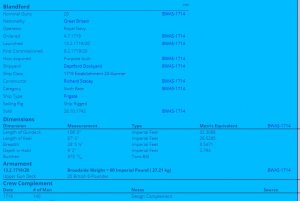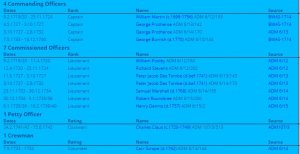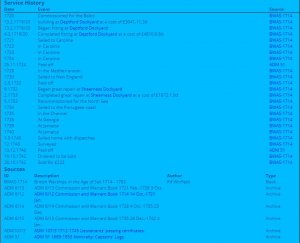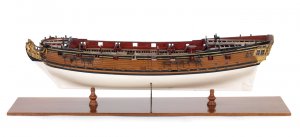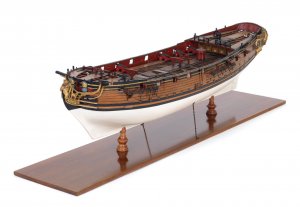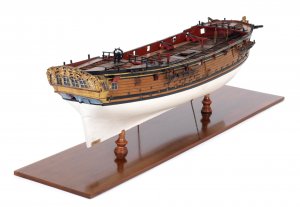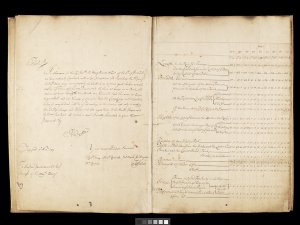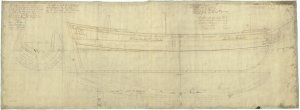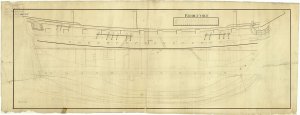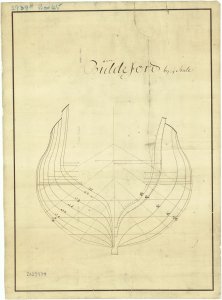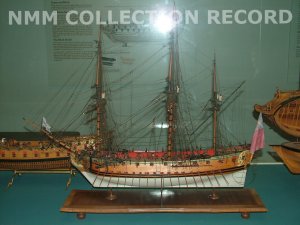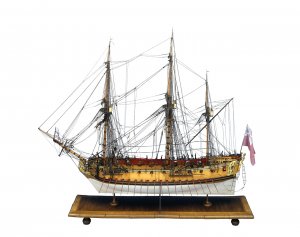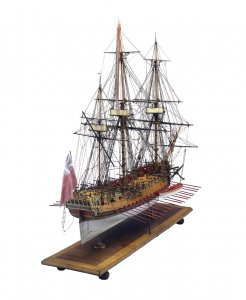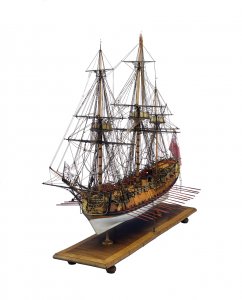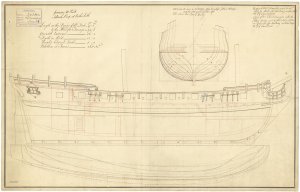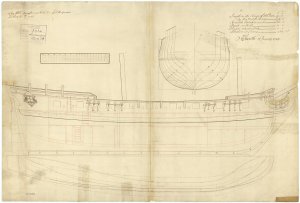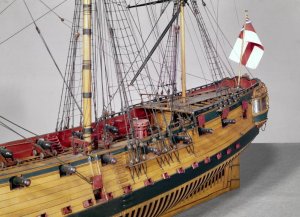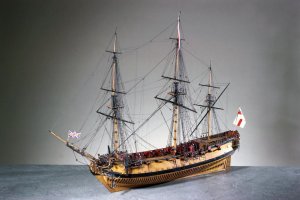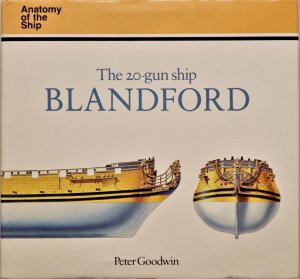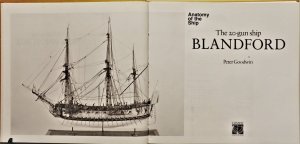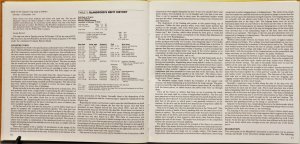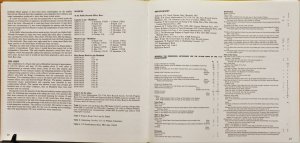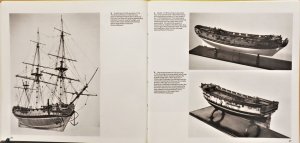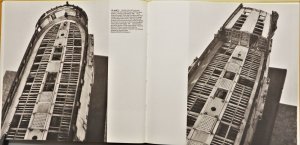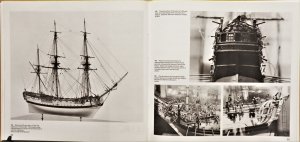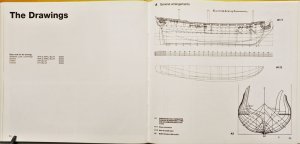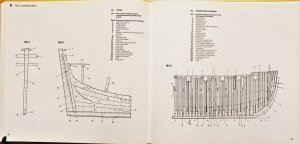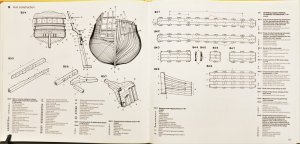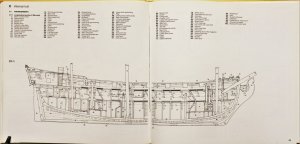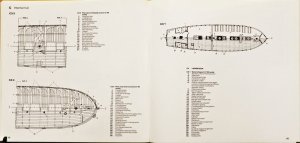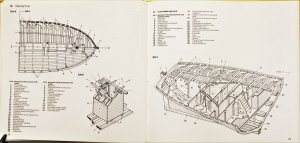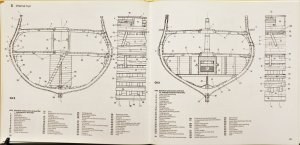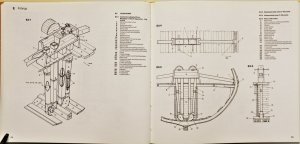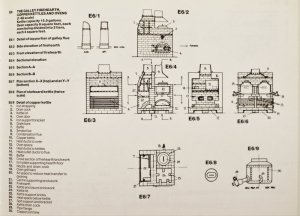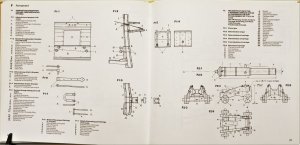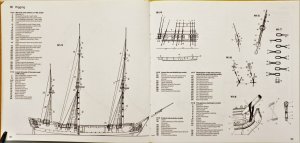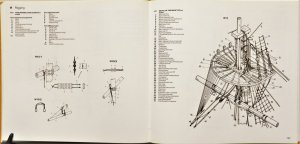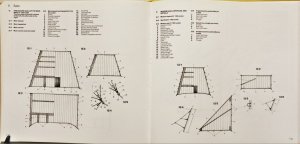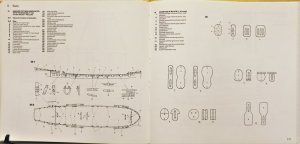HMS Blandford, launched 13.th February 1720, a 20-gun frigate, was one of the first ships of all together 22 frigates which were built based on the so called 1719 Establishment
1719 Establishment
The 1719 Establishment was a set of mandatory requirements governing the construction of all Royal Navy warships capable of carrying more than 20 naval long guns. It was designed to bring economies of scale through uniform vessel design, and ensure a degree of certainty about vessel capability once at sea, and was applied to all vessels from the first-rate to the fifth-rate. Once in effect, it superseded the 1706 Establishment, which had specified major dimensions for ships of the second-rate, third-rate and fourth-rate only.
The new Establishment in 1719 was not simply limited to specifying the overall dimensions of each type of warship, but now set out in great detail other factors used in constructing the ship, down to the thickness of timbers ("scantlings") used in construction and planking.
The Establishment adopted in 1719 was subject to substantial revisions in both 1733 and 1741, although on neither occasion was the 1719 Establishment replaced. A new Establishment was finally adopted in 1745.
Before the 1745 centralised all design work in the office of the Surveyor of the Navy, the design of every vessel was the responsibility of the Master Shipwright in the dockyard in which that vessel was built; thus ships built to one Establishment has to conform to the dimensions and other measurements specified by that Establishment, but were to varying designs and therefore did not constitute a "class" in the modern use of the term. The exception to this was when ships were built under contract by commercial shipbuilders, for which a common design was prepared by the Surveyor and copies sent to the shipbuilder for execution; this only applied to some of the two-decker ships and smaller vessels (all three-deckers were built or rebuilt in the Royal Dockyards), and was almost exclusively a wartime occurrence.
Background
When the 1706 Establishment had been introduced, British naval architecture had entered a period of highly conservative stagnation. The Establishments were intended to create standardisation throughout the fleet, in part to reduce the cost of maintaining Britain's large navy. The side effect was to almost completely eliminate any design innovation until the abolition of the Establishments in the early 1750s.
When King George I ascended the throne in 1714, thus beginning the Hanoverian dynasty in Great Britain, the main institutions of the Royal Navy — the Board of Admiralty and the Navy Board — underwent the typical reorganisations associated with a change of régime. While the Admiralty became a much more political body, the Navy Board became populated by men who had learnt their trade during the formative years of the Establishment system. A very significant factor in the formation of the 1719 Establishment and its subsequent longevity is that the period of 1714—1739 was the most peaceful of the 18th Century.
A further contributory factor was the introduction of a new Establishment of Guns in 1716. Previously, gun establishments had catered for each ship, as there were often differences between ships of the same nominal size that would affect the armament they could carry. The 1716 gun establishment was intended to overturn that situation, so that all ships of a particular type (for example, 70 gun ships) would carry the same armament. The Navy Board highlighted the fact that there were still several ships in service that were physically incapable of carrying the prescribed armament, either due to the number and disposition of gunports, or to sturdiness of build. Essentially, however, the Navy Board resolved to undertake the task of having all ships rebuilt to common designs to facilitate the new gun establishment.

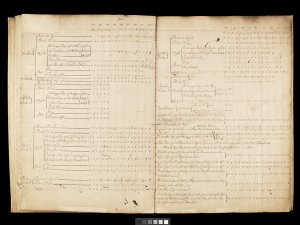
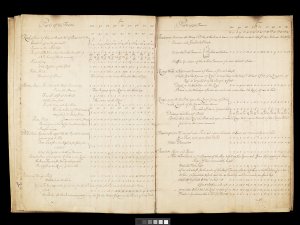
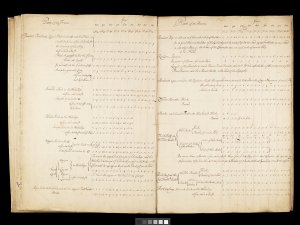
One volume of 1719 Establishment dimensions and scantlings, ADM 170/429
1719 arrangements
The new Establishment of dimensions, finalised in December 1719, was significantly more detailed than its predecessor. The 1706 Establishment had sought to constrain only the basic dimensions (gundeck length, keel length, breadth, and depth in the hold), whereas the 1719 Establishment detailed everything from the keel length to the thickness of planks on each deck. The new Establishment was also expanded in scope to include first rates, the dimensions for which were to be based upon HMS Royal Sovereign. In the other direction the new Establishment expanded down to include the sixth rates and the smaller (30-gun) fifth rates, so that all ships with 20 guns or more were covered. The dimensions for other ship types were adjusted according to experience with ships built to the 1706 Establishment.
1733 proposals and revisions
Over time, as British shipbuilding remained stagnant, Britain's foreign maritime rivals, most notably France, continued developing their own ships so that eventually the Navy Board was forced to take note. British ships by comparison with their foreign counterparts were usually significantly smaller — a practice that had come about through a combination of various factors differentiating the role of the Royal Navy from that of the continental navies, but a major factor was the need for a sizeable fleet, and the associated requirement to keep costs as low as practicable. However, by 1729 concerns were being expressed that the ships being built to the 1719 Establishment may be too small, and so a new ship, HMS Centurion, and HMS Rippon which was due for rebuilding, were built with slightly altered dimensions.
In 1732 the Admiralty decided to ask the Master Shipwrights in each of the Royal dockyards to report to them on how best they thought the ships could be improved. The responses, when they finally arrived, were conservative, offering only minor adjustments to certain dimensions. There was little agreement between the changes proposed, and no further progress was made until May 1733 when Sir Jacob Ackworth of the Navy Board — the Surveyor of the Navy at the time — proposed to the Admiralty some changes to the dimensions of the 50-gun and 60-gun ships, most notably an increase in breadth. The Admiralty accepted these proposals, and the ones that followed in later months for the other types, and these new dimensions became the effective new Establishment, though they never technically superseded the 1719 dimensions; there was no 1733 Establishment. Indications are that the Admiralty desired more far-reaching reforms that what was actually implemented, but due in part to the absence of anyone with practical shipbuilding knowledge on the Board, the Board of Admiralty lacked the ability to realise them.
1741 proposals and revisions
The true state of British ship design became apparent with the start of the War of Jenkins' Ear. The capture of the Spanish 70-gun ship Princessa in April 1740 by three British 70-gun ships (HMS Kent, HMS Lennox and HMS Orford) took six hours of fighting despite one of Princessa's topmasts being missing. Her greater size (much closer to that of a British 90-gun ship than a 70) gave her stability that the British ships lacked, and her build quality allowed her to withstand the pounding from the three British ships for a long time. By way of response to the now apparent individual inferiority of British ships over their opponents, a previously abandoned update to the gun establishment was called upon to increase the firepower of the ships. With heavier guns came the need for larger ships to carry them, and so Sir Jacob made a new set of proposals for increased dimensions—slightly less conservative this time around. Additionally, the new gun establishment made some changes to the types of ships that would be on the navy list in future. The 70-gun ships would become 64-gunners, albeit with heavier guns as compensation, and the 60-gun ships were to become 58-gun ships, again with heavier guns. No first rates were built to the dimensions of the 1741 proposals, but one ship of 74 guns and two of 66 were constructed.
An additional side effect of the war was the collapse of the system of rebuilding. Until the outbreak of the war, it had been the practice to rebuild ships periodically, to maintain the size of the fleet without alarming parliament with requests for new ships. In reality, many of these rebuilds amounted to just that, with little or no timber from the original ship surviving into her rebuilt form. In some cases, ships would be dismantled years before they actually underwent the rebuilding process, but remained on the active list for the entire time. Rebuilding a ship was a lengthy process, more time consuming and more expensive than building a completely new one. The pressures of the war meant that for drydocks to be taken up for long periods of time whilst a ship was surveyed to determine what timber was reusable in the new ship, and what could find a use elsewhere in the dockyard, disassembled and then rebuilt was counter-productive. Ships intended to be sent to the West Indies for service in the war required the use of drydocks to have their hulls appropriately sheathed to combat such problems as shipworm, and other uses of the drydocks for servicing the fleet meant that rebuilds were given a low priority. It was at this time that the British practise of converting old ships to hulks for expanded storage space in harbours began, as instead of wasting effort and dockyard space on breaking up an old vessel that was still perfectly capable of floating, they were converted to serve the dockyards in this new capacity. Few rebuilds were started after 1739, and none at all were begun after 1742, although any that had been started were allowed to complete.
Individual ship types
A different set of Establishment dimensions was defined for each size of ship, other than the smallest (i.e. the unrated) vessels.
First rates of 100 guns
Second rates of 90 guns
Third rates of 80 guns
Third rates of 70 (later 64) guns
Fourth rates of 60 (later 58) guns
Fourth rates of 50 guns
Fifth rates of 40 guns
Fifth rates of 30 guns
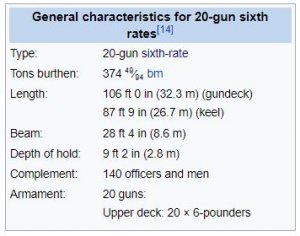
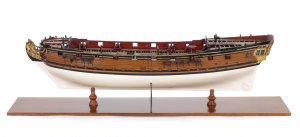
Scale: 1:48. A Georgian full hull model of a sixth-rate sloop (circa 1730). The model is decked. The initials ‘GR’ appear on the stern. Twenty ships were made in the style of the 1719 Establishment. They were 106 feet long with a beam of 30 feet. They weighed 428 tons burden and had a complement of 140 men. They carried twenty 6-pound guns. Around 1730 two ships (the ‘Sheerness’ and the ‘Dolphin’) were built to a modified design, being 2½ feet longer than their predecessors. This was an intermediate stage in the development of the 1773 Establishment 20-gun ships, which were of a similar size but with a heavier burden.
Sixth rates of 20 guns
General characteristics for 20-gun sixth rates
Type: 20-gun sixth-rate
Tons burthen: 374 49⁄94bm
Length:
Depth of hold: 9 ft 2 in (2.8 m)
Complement: 140 officers and men
Armament:
The 1719 Establishment for sixth rates took as its model the highly successful Dursley Galley built in 1719. It revised the dimensions of these ships from the 1706 Establishment dimensions to those shown in the adjacent table.
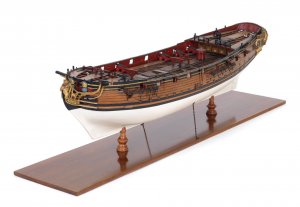
Three sixth rates were new built
the Greyhound and Blandford as replacements in 1720 for lost vessels,
and the Rye as replacement in 1727 for a discarded ship
and seventeen others were rebuilt from existing ships to this Establishment specification
the Lyme and Shoreham in 1720,
Scarborough in 1722,
Lowestoffe in 1723,
Garland, Seaford and Rose in 1724,
Deal Castle, Fox, Gibraltar, Bideford, Seahorse, Squirrel, Aldborough, Flamborough and Experiment in 1727,
and Phoenix in 1728.
Two further 20-gun ships were rebuilt at Deptford to a slightly enlarged specification in 1732
the Sheerness and Dolphin - with the beam increased to 30 ft 5in.
The 1733 revision made no change to the gundeck length of the 20-gun sixth rate, and actually reduced the keel length by 9 inches. It substantially increased the beam by 26 inches from the 1719 dimensions and the depth in hold by 3 inches as follows:
The 1741 revision further increased the dimensions to:
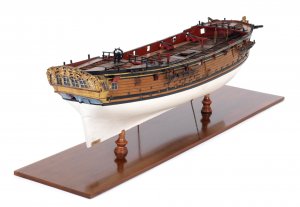
Once more an overview of the 20-gun ships based on the 1719 Establishment
1719 Establishment 20-gun sixth rates 1720-1728:
HMS Lyme 1720
HMS Greyhound 1720
HMS Blandford 1720
HMS Shoreham 1720
HMS Scarborough 1722
HMS Garland 1724
HMS Seaford 1724
HMS Lowestoffe 1723
HMS Rose 1724
HMS Deal Castle 1727
HMS Fox 1727
HMS Gibraltar 1727
HMS Bideford 1727
HMS Seahorse 1727
HMS Squirrel 1727
HMS Aldborough 1727
HMS Flamborough 1727
HMS Experiment 1727
HMS Rye 1727
HMS Phoenix 1728
Modified 1719 Establishment 20-gun sixth rates 1729-1732:
HMS Sheerness 1729
HMS Dolphin 1732
Here the overview of all ships with the related measures from the source "Threedecks"
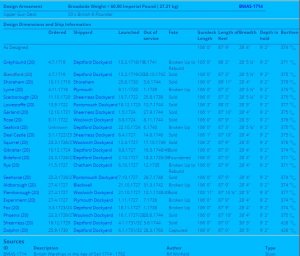
https://en.wikipedia.org/wiki/1719_Establishment
https://en.wikipedia.org/wiki/List_of_frigate_classes_of_the_Royal_Navy
https://threedecks.org/index.php?display_type=show_class&id=219
http://collections.rmg.co.uk/collections/objects/66398.html
1719 Establishment
The 1719 Establishment was a set of mandatory requirements governing the construction of all Royal Navy warships capable of carrying more than 20 naval long guns. It was designed to bring economies of scale through uniform vessel design, and ensure a degree of certainty about vessel capability once at sea, and was applied to all vessels from the first-rate to the fifth-rate. Once in effect, it superseded the 1706 Establishment, which had specified major dimensions for ships of the second-rate, third-rate and fourth-rate only.
The new Establishment in 1719 was not simply limited to specifying the overall dimensions of each type of warship, but now set out in great detail other factors used in constructing the ship, down to the thickness of timbers ("scantlings") used in construction and planking.
The Establishment adopted in 1719 was subject to substantial revisions in both 1733 and 1741, although on neither occasion was the 1719 Establishment replaced. A new Establishment was finally adopted in 1745.
Before the 1745 centralised all design work in the office of the Surveyor of the Navy, the design of every vessel was the responsibility of the Master Shipwright in the dockyard in which that vessel was built; thus ships built to one Establishment has to conform to the dimensions and other measurements specified by that Establishment, but were to varying designs and therefore did not constitute a "class" in the modern use of the term. The exception to this was when ships were built under contract by commercial shipbuilders, for which a common design was prepared by the Surveyor and copies sent to the shipbuilder for execution; this only applied to some of the two-decker ships and smaller vessels (all three-deckers were built or rebuilt in the Royal Dockyards), and was almost exclusively a wartime occurrence.
Background
When the 1706 Establishment had been introduced, British naval architecture had entered a period of highly conservative stagnation. The Establishments were intended to create standardisation throughout the fleet, in part to reduce the cost of maintaining Britain's large navy. The side effect was to almost completely eliminate any design innovation until the abolition of the Establishments in the early 1750s.
When King George I ascended the throne in 1714, thus beginning the Hanoverian dynasty in Great Britain, the main institutions of the Royal Navy — the Board of Admiralty and the Navy Board — underwent the typical reorganisations associated with a change of régime. While the Admiralty became a much more political body, the Navy Board became populated by men who had learnt their trade during the formative years of the Establishment system. A very significant factor in the formation of the 1719 Establishment and its subsequent longevity is that the period of 1714—1739 was the most peaceful of the 18th Century.
A further contributory factor was the introduction of a new Establishment of Guns in 1716. Previously, gun establishments had catered for each ship, as there were often differences between ships of the same nominal size that would affect the armament they could carry. The 1716 gun establishment was intended to overturn that situation, so that all ships of a particular type (for example, 70 gun ships) would carry the same armament. The Navy Board highlighted the fact that there were still several ships in service that were physically incapable of carrying the prescribed armament, either due to the number and disposition of gunports, or to sturdiness of build. Essentially, however, the Navy Board resolved to undertake the task of having all ships rebuilt to common designs to facilitate the new gun establishment.




One volume of 1719 Establishment dimensions and scantlings, ADM 170/429
1719 arrangements
The new Establishment of dimensions, finalised in December 1719, was significantly more detailed than its predecessor. The 1706 Establishment had sought to constrain only the basic dimensions (gundeck length, keel length, breadth, and depth in the hold), whereas the 1719 Establishment detailed everything from the keel length to the thickness of planks on each deck. The new Establishment was also expanded in scope to include first rates, the dimensions for which were to be based upon HMS Royal Sovereign. In the other direction the new Establishment expanded down to include the sixth rates and the smaller (30-gun) fifth rates, so that all ships with 20 guns or more were covered. The dimensions for other ship types were adjusted according to experience with ships built to the 1706 Establishment.
1733 proposals and revisions
Over time, as British shipbuilding remained stagnant, Britain's foreign maritime rivals, most notably France, continued developing their own ships so that eventually the Navy Board was forced to take note. British ships by comparison with their foreign counterparts were usually significantly smaller — a practice that had come about through a combination of various factors differentiating the role of the Royal Navy from that of the continental navies, but a major factor was the need for a sizeable fleet, and the associated requirement to keep costs as low as practicable. However, by 1729 concerns were being expressed that the ships being built to the 1719 Establishment may be too small, and so a new ship, HMS Centurion, and HMS Rippon which was due for rebuilding, were built with slightly altered dimensions.
In 1732 the Admiralty decided to ask the Master Shipwrights in each of the Royal dockyards to report to them on how best they thought the ships could be improved. The responses, when they finally arrived, were conservative, offering only minor adjustments to certain dimensions. There was little agreement between the changes proposed, and no further progress was made until May 1733 when Sir Jacob Ackworth of the Navy Board — the Surveyor of the Navy at the time — proposed to the Admiralty some changes to the dimensions of the 50-gun and 60-gun ships, most notably an increase in breadth. The Admiralty accepted these proposals, and the ones that followed in later months for the other types, and these new dimensions became the effective new Establishment, though they never technically superseded the 1719 dimensions; there was no 1733 Establishment. Indications are that the Admiralty desired more far-reaching reforms that what was actually implemented, but due in part to the absence of anyone with practical shipbuilding knowledge on the Board, the Board of Admiralty lacked the ability to realise them.
1741 proposals and revisions
The true state of British ship design became apparent with the start of the War of Jenkins' Ear. The capture of the Spanish 70-gun ship Princessa in April 1740 by three British 70-gun ships (HMS Kent, HMS Lennox and HMS Orford) took six hours of fighting despite one of Princessa's topmasts being missing. Her greater size (much closer to that of a British 90-gun ship than a 70) gave her stability that the British ships lacked, and her build quality allowed her to withstand the pounding from the three British ships for a long time. By way of response to the now apparent individual inferiority of British ships over their opponents, a previously abandoned update to the gun establishment was called upon to increase the firepower of the ships. With heavier guns came the need for larger ships to carry them, and so Sir Jacob made a new set of proposals for increased dimensions—slightly less conservative this time around. Additionally, the new gun establishment made some changes to the types of ships that would be on the navy list in future. The 70-gun ships would become 64-gunners, albeit with heavier guns as compensation, and the 60-gun ships were to become 58-gun ships, again with heavier guns. No first rates were built to the dimensions of the 1741 proposals, but one ship of 74 guns and two of 66 were constructed.
An additional side effect of the war was the collapse of the system of rebuilding. Until the outbreak of the war, it had been the practice to rebuild ships periodically, to maintain the size of the fleet without alarming parliament with requests for new ships. In reality, many of these rebuilds amounted to just that, with little or no timber from the original ship surviving into her rebuilt form. In some cases, ships would be dismantled years before they actually underwent the rebuilding process, but remained on the active list for the entire time. Rebuilding a ship was a lengthy process, more time consuming and more expensive than building a completely new one. The pressures of the war meant that for drydocks to be taken up for long periods of time whilst a ship was surveyed to determine what timber was reusable in the new ship, and what could find a use elsewhere in the dockyard, disassembled and then rebuilt was counter-productive. Ships intended to be sent to the West Indies for service in the war required the use of drydocks to have their hulls appropriately sheathed to combat such problems as shipworm, and other uses of the drydocks for servicing the fleet meant that rebuilds were given a low priority. It was at this time that the British practise of converting old ships to hulks for expanded storage space in harbours began, as instead of wasting effort and dockyard space on breaking up an old vessel that was still perfectly capable of floating, they were converted to serve the dockyards in this new capacity. Few rebuilds were started after 1739, and none at all were begun after 1742, although any that had been started were allowed to complete.
Individual ship types
A different set of Establishment dimensions was defined for each size of ship, other than the smallest (i.e. the unrated) vessels.
First rates of 100 guns
Second rates of 90 guns
Third rates of 80 guns
Third rates of 70 (later 64) guns
Fourth rates of 60 (later 58) guns
Fourth rates of 50 guns
Fifth rates of 40 guns
Fifth rates of 30 guns


Scale: 1:48. A Georgian full hull model of a sixth-rate sloop (circa 1730). The model is decked. The initials ‘GR’ appear on the stern. Twenty ships were made in the style of the 1719 Establishment. They were 106 feet long with a beam of 30 feet. They weighed 428 tons burden and had a complement of 140 men. They carried twenty 6-pound guns. Around 1730 two ships (the ‘Sheerness’ and the ‘Dolphin’) were built to a modified design, being 2½ feet longer than their predecessors. This was an intermediate stage in the development of the 1773 Establishment 20-gun ships, which were of a similar size but with a heavier burden.
Sixth rates of 20 guns
General characteristics for 20-gun sixth rates
Type: 20-gun sixth-rate
Tons burthen: 374 49⁄94bm
Length:
- 106 ft 0 in (32.3 m) (gundeck)
- 87 ft 9 in (26.7 m) (keel)
Depth of hold: 9 ft 2 in (2.8 m)
Complement: 140 officers and men
Armament:
- 20 guns:
- Upper deck: 20 × 6-pounders
The 1719 Establishment for sixth rates took as its model the highly successful Dursley Galley built in 1719. It revised the dimensions of these ships from the 1706 Establishment dimensions to those shown in the adjacent table.

Three sixth rates were new built
the Greyhound and Blandford as replacements in 1720 for lost vessels,
and the Rye as replacement in 1727 for a discarded ship
and seventeen others were rebuilt from existing ships to this Establishment specification
the Lyme and Shoreham in 1720,
Scarborough in 1722,
Lowestoffe in 1723,
Garland, Seaford and Rose in 1724,
Deal Castle, Fox, Gibraltar, Bideford, Seahorse, Squirrel, Aldborough, Flamborough and Experiment in 1727,
and Phoenix in 1728.
Two further 20-gun ships were rebuilt at Deptford to a slightly enlarged specification in 1732
the Sheerness and Dolphin - with the beam increased to 30 ft 5in.
The 1733 revision made no change to the gundeck length of the 20-gun sixth rate, and actually reduced the keel length by 9 inches. It substantially increased the beam by 26 inches from the 1719 dimensions and the depth in hold by 3 inches as follows:
- Tons burthen: 430 46⁄94 bm
- Length: 106 ft 0 in (32.3 m) (gundeck)
87 ft 0 in (26.5 m) (keel) - Beam: 30 ft 6 in (9.3 m)
- Depth in hold: 9 ft 5 in (2.9 m)
The 1741 revision further increased the dimensions to:
- Tons burthen: 498 36⁄94 bm
- Length: 112 ft 0 in (34.1 m) (gundeck)
91 ft 6 in (27.9 m) (keel) - Beam: 32 ft 0 in (9.8 m)
- Depth in hold: 11 ft 0 in (3.4 m)

Once more an overview of the 20-gun ships based on the 1719 Establishment
1719 Establishment 20-gun sixth rates 1720-1728:
HMS Lyme 1720
HMS Greyhound 1720
HMS Blandford 1720
HMS Shoreham 1720
HMS Scarborough 1722
HMS Garland 1724
HMS Seaford 1724
HMS Lowestoffe 1723
HMS Rose 1724
HMS Deal Castle 1727
HMS Fox 1727
HMS Gibraltar 1727
HMS Bideford 1727
HMS Seahorse 1727
HMS Squirrel 1727
HMS Aldborough 1727
HMS Flamborough 1727
HMS Experiment 1727
HMS Rye 1727
HMS Phoenix 1728
Modified 1719 Establishment 20-gun sixth rates 1729-1732:
HMS Sheerness 1729
HMS Dolphin 1732
Here the overview of all ships with the related measures from the source "Threedecks"

https://en.wikipedia.org/wiki/1719_Establishment
https://en.wikipedia.org/wiki/List_of_frigate_classes_of_the_Royal_Navy
https://threedecks.org/index.php?display_type=show_class&id=219
http://collections.rmg.co.uk/collections/objects/66398.html



